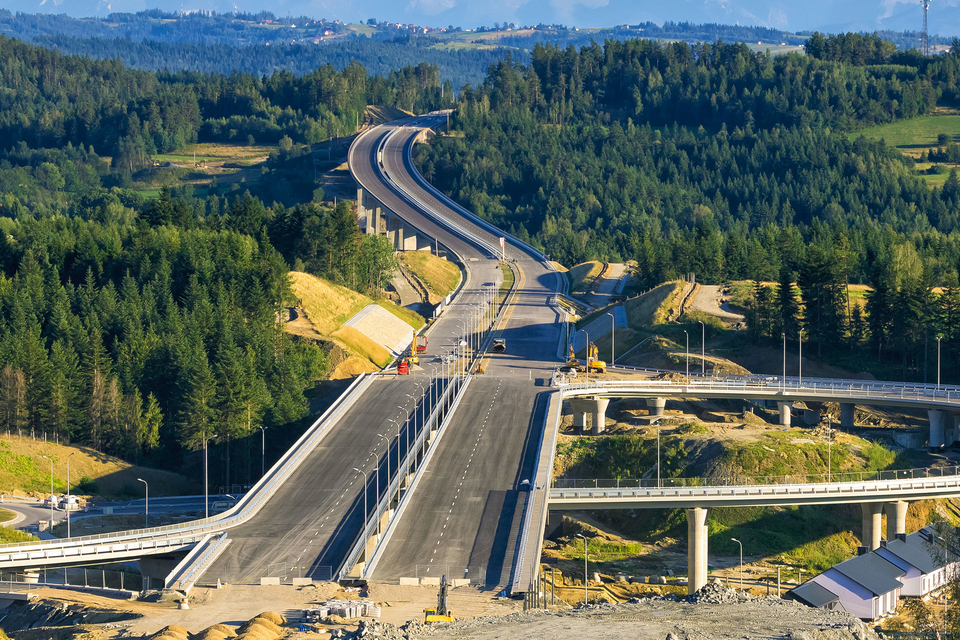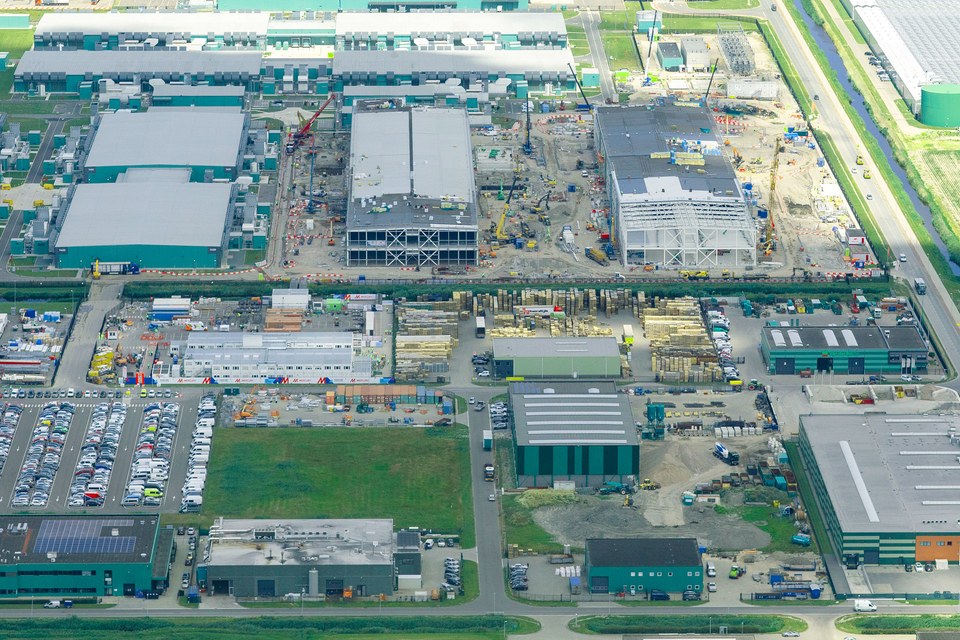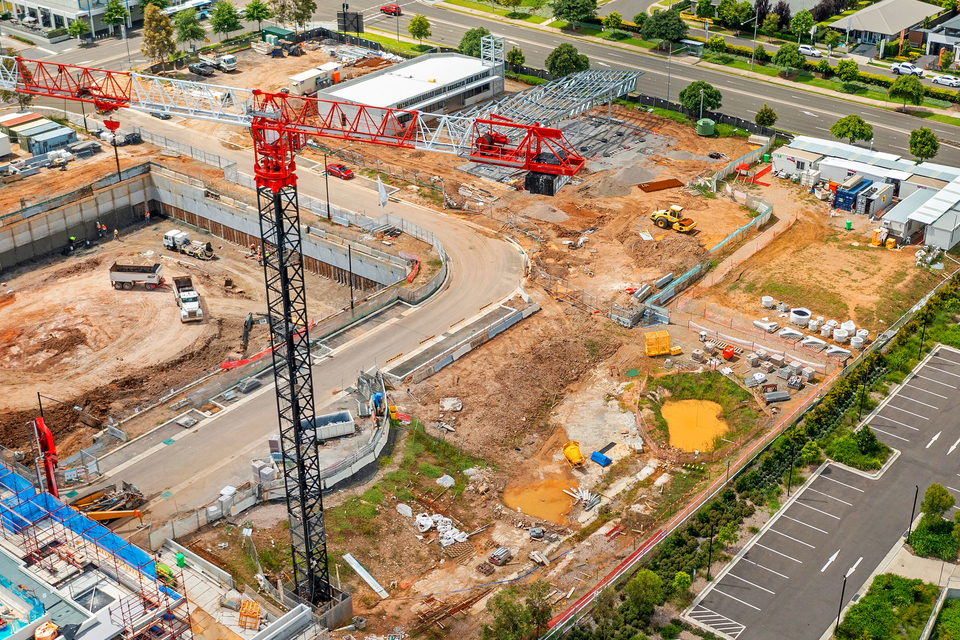Risk allocation and mitigation in energy projects
As the landscape for new energy projects evolves, parties are reassessing their appetite for risk and proactively seeking solutions to ensure success.

With an unprecedented momentum for the construction of new major projects linked to the shift away from fossil fuels and the development of a low-carbon economy, there is a real focus on construction law issues relevant to such projects
The widespread recognition of the urgent need to transition away from fossil fuels in energy systems, combined with a drive to decarbonize hard-to-abate industries, corporate and geopolitical tussles for supply chain security and market share for new green technologies, as well as various regulatory incentives and trade barriers, are collectively building unprecedented momentum for the investment in and construction of new major projects.
Such construction projects are no longer limited to wind, solar and other renewable energy; significant capital expenditure is also necessary to revolutionize heavy-emitting, fossil fuel-dependent industries such as steelmaking, alumina refining and cement production. This transformation may involve re-engineering existing plants to utilize clean energy sources and eliminate the need for coal and natural gas or adding carbon capture facilities to emitting plants.
As the transportation industry undergoes a revolution, entirely new industries are emerging, including pioneering projects for synthetic aviation fuel and gigafactories for batteries to support carbon-free mass transport. The rapid growth of the digital world, along with the current boom in Generative AI, is fueling the proliferation of data centers—one of the most energy-intensive building types—driving in turn their own need to limit electricity consumption and carbon footprint in order to achieve net-zero.
In this compendium, we take a closer look at the complexities and challenges of refurbishing and retrofitting brownfield industrial projects for a low-carbon future. We also explore methods for developing new data center projects in a more sustainable way, resulting in reduced carbon emissions.
The construction industry faces the challenge of finding appropriate and sustainable procurement and contracting structures for delivering these low-carbon projects. Many projects are of such scale or involve so many new technology risks that traditional procurement structures need to be revisited and challenged, often with the aim of better managing and sharing risks between the contracting parties, and ensuring the nurturing of new technologies.
We examine the growing use of multi-contract procurement structures in the US, and the use of collaborative contracting strategies in Australia, as well as an array of "green" contract provisions that have been introduced in FIDIC, NEC and JCT contracts to track ESG issues arising out of new construction projects.
Lastly, given that English law remains one of the dominant choices for governing major construction contracts in many jurisdictions, we conclude the compendium with an overview of the major recent developments in English construction law.
We hope you will find this compendium a useful and thought-provoking read, and look forward to exploring these themes as the landscape of major construction projects continues to evolve.
As the landscape for new energy projects evolves, parties are reassessing their appetite for risk and proactively seeking solutions to ensure success.

There is significant interest in investing into the rejuvenation of brownfield projects, but these projects face construction law challenges.

As the urgency to combat climate change escalates, the construction and engineering sectors are stepping up to the challenge. With a growing emphasis on net-zero solutions, contractual provisions tailored to sustainability are gaining momentum, highlighting a pivotal shift toward greener practices within these industries.

In recent years, escalation and price volatility have re-emerged in the global economy. The impact on large energy and infrastructure projects will be significant: Owners and contractors need to react and adapt.

As the demand for data storage grows, so does the need for more data centers with ever-increasing capacity. We examine new ways for developers to reduce energy consumption.

Amid the intricate landscape of Australia’s construction industry and geopolitical challenges looming large, collaborative contracting emerges as a powerful strategy for stakeholders across construction projects in Australia.

There have been a number of important developments in English construction law during the past two years, several of which relate to, or arose in the context of, building and fire safety. We examine their ramifications.


There is significant interest in investing into the rejuvenation of brownfield projects, but these projects face construction law challenges.
Explore Trendscape
Our take on the interconnected global trends that are shaping the business climate for our clients.
While the construction of new renewable energy projects continues to be the most dominant headline regarding energy transition-related opportunities, White & Case's recent survey of how corporates and capital providers are setting priorities to scale-up the energy transition, has also identified significant interest in rejuvenating brownfield projects.
Over a quarter (26 percent) of White & Case's survey respondents said refurbishing existing production facilities to be more energy-efficient and less polluting was an opportunity they planned to pursue in the next 18 months. A similar proportion (24 percent) identified investing in brownfield projects to transition them to a lower-emissions fuel source or sector as an opportunity they planned to target.
Works at brownfield projects incur additional construction risks that companies will need to consider and manage when procuring and carrying out construction works necessary to transition existing facilities to a low-carbon future.
Whether an expansion, add-on or complete revamp of an existing brownfield project, the interaction and integration of an existing, operating and often old project with new works is intrinsically more complicated than a new-build project on a previously unused site. Refurbishment works in particular are often described as the most difficult type of project for process plants.
The challenges facing brownfield projects are varied, and depend in part on the project in question and the technology being retrofitted to the existing plant.
26%
of White & Case’s recent “Scaling up the energy transition” survey respondents said they planned to pursue refurbishing existing production facilities in the next 18 months
Whether an expansion, add-on or complete revamp, the integration of an existing project with new works is intrinsically more complicated than a new-build
While some of the risks regarding refurbishment works are intrinsic to the nature of the works themselves, they can be managed and mitigated by the terms and conditions of a properly prepared and negotiated construction contract, and by prudent contract management and procurement. Selecting the correct contractor, or team of contractors, to carry out the works is a critical first step. The contractor market for this kind of work is narrower than more conventional construction works. Owners therefore have a more limited choice, and contractors accordingly have more leverage when tendering. This competition and tender may well be exacerbated if the energy transition results in more retrofit projects being undertaken.
The specialized nature of these works should be acknowledged by owners, who should ensure that procurement processes include thorough technical prequalification processes to avoid owners having to make unfair comparisons between commercial offers from specialized contractors and unsuitable contractors. Contractors with existing familiarity of the site, for example the original contractor, may also rightly be preferred, as they are likely to know the plant better and be better able to manage and price the more uncertain parts of the scope of works.
Having the right owner's team is also critical. The interaction between the construction and operations teams, as well as potentially the interaction between the different contractors if works are not done under a single engineering, procurement and construction (EPC) turnkey contract, requires the owner to have a properly resourced project management team. The specialized nature of these works and the coordination required is likely to warrant bringing in an external project management consultant or EPC management contractor to manage the process, rather than relying on an owner's regular operational procurement team.
To the extent that they are physically feasible, site surveys are key to better understanding and, where possible, quantifying issues posed by existing site conditions, particularly contamination. Site remediation works are often a daunting task, and something that countries with expansive land compared to populations can often sidestep by developing greenfield land.
As the momentum to reduce carbon emissions gathers pace, the focus will invariably shift to industrial emitters, which constitute a remarkably high and often overlooked proportion of global carbon emissions
Globally, remediation works experience is perhaps strongest in places with large populations and small land masses, such as Singapore and Taiwan, where construction on brownfield sites has long been essential. As the energy transition spurs the renewal and refurbishment of existing facilities, engineering expertise from these jurisdictions may be leveraged more widely.
Uncertainty as to scope and site conditions invariably leads to difficult discussions around remuneration. Sampling is one contractual mechanism that can be used to create some balance between the parties where the condition of an existing plant is not clear until stripping works have been completed. In a sampling mechanism, the parties may agree upon a price based on a number of samples taken from, or sample stripping carried out on, the existing plant.
Another mechanism can be to agree to a schedule of rates, with different rates payable depending on what kind of underlying conditions are discovered following the stripping back of the existing plant, with an initial price developed based on a set of assumptions around the condition of the existing plant. While these mechanisms will not achieve a fixed lump-sum price of the kind usually seen in traditional EPC contracts, depending on their structure they can create clear capital expenditure ranges for a project. This can make it easier for a project to craft a non-balance-sheet financing solution or justify to lenders a limited level of sponsor support.
Alternatively, parties may agree that certain elements of the works will be carried out on a reimbursable cost-plus basis. This may be reasonable, depending on the level of uncertainty regarding the nature and extent of the works, as well as the state of the contractor market. However, if this is agreed upon, owners should be careful to draft clear and objective requirements into their contracts as to how reimbursable prices are calculated.
This would normally include ensuring that the contractor is tendering subcontracts and generally achieving value-for-money for the owner, and also that contractor overhead and profits are not being double-counted, for example under subcontracts with affiliates. As far as possible, owners should also ensure that reimbursable cost contracts include incentives on the contractor to incur costs in a reasonable and efficient manner.
Robust performance guarantees are difficult to achieve where the performance of refurbished works is dependent on pre-existing plant and equipment. Where technically and commercially appropriate, a way around this can be to have the contractor also refurbish or replace the pre-existing plants and equipment.
Perhaps more fundamentally from an owner liability perspective, owners should make sure that the refurbishment and adjustment of the existing plant, and the potential combination of the plant with new technologies, does not create any intellectual property and technology license issues, either with existing process licensors on whom the plant depends in order to run, or with any licensor of any new technology being brought into the plant. The existing and proposed license arrangements should be subject to careful legal and technical review before any project is commenced to refurbish a plant to accommodate new low-carbon technology or fuel solutions.
Similarly, where changes are required to a plant's utilities and ancillary infrastructure in order to accommodate a low-carbon solution, owners should investigate at an early stage whether any such changes are feasible. As part of the feasibility assessment, owners should consider the associated regulatory process for any required changes, as these processes can be timely and not fully within the owner's control, and may well impact the critical path of the project.
Refurbishment works are often scheduled during planned downtime, or during periods or seasons when the price for the plant's offtake is expected to be lower. In any case, the construction contract should include clear dates for completion, incentivized by delay liquidated damages, in order to try and ensure that disruption to operations and plant revenues are minimal. If technically feasible, sectional completion may also allow parts of the plant to be completed, handed back to the owner and returned to operations, while the remaining refurbishment works are completed.
The momentum to find ways to reduce carbon emissions shows no sign of abating, and as the electrification of vehicles and the reduction of gasoline and coal use becomes more widespread, the focus will invariably shift to industrial emitters, such as metals and other process plants, which constitute a remarkably high and often overlooked proportion of global carbon emissions.
With a focus on creating a circular economy, and a growing focus on decarbonization of hard to abate industries, the expectations of the recent energy transition survey are sure to play out, particularly in relation to energy-intensive process plants, forcing owners of metals and other process plants to tackle the challenging task of carrying out construction works at brownfield sites.
There are a variety of imperatives pushing companies to make these capital investments now. While daunting, proper procurement and planning, well-prepared construction contracts and astute project management can ensure that these complex projects are a success.
White & Case means the international legal practice comprising White & Case LLP, a New York State registered limited liability partnership, White & Case LLP, a limited liability partnership incorporated under English law and all other affiliated partnerships, companies and entities.
This article is prepared for the general information of interested persons. It is not, and does not attempt to be, comprehensive in nature. Due to the general nature of its content, it should not be regarded as legal advice.
© 2024 White & Case LLP